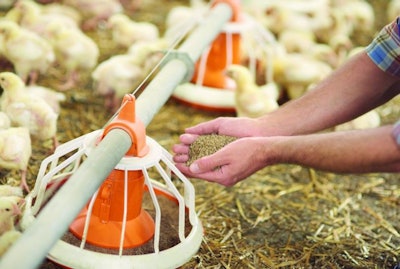
Feed is one of the largest contributors of greenhouse gas emissions within the U.S. poultry industry. A new principle called regenerative agriculture could help reduce environmental impact, while still maintaining profits.
During “Net zero and the future of sustainable poultry production,” a panel discussion recorded by WATTPoultry.com and Evonik Animal Nutrition at the 2023 International Production & Processing Expo (IPPE), a trio of industry experts discussed the things poultry producers can do to accelerate net zero and other sustainability goals.
The panelists were:
Andy Rojeski, head of strategy, investor relations and Net Zero programs, Pilgrim’s
Faazi Adam, director of sustainability, animal nutrition line, Evonik
Lara Moody, executive director of IFEEDER
Terrence O’Keefe, content director, WATT Global Media, moderated the talk.
Terrence O’Keefe: If we were going to take a 30,000-foot view of greenhouse gas emissions from raising, processing and marketing poultry, what's the biggest contributor? Where's the area where we can make the biggest difference if we make changes?
Lara Moody: There's a lifecycle assessment that's been done on U.S. poultry production systems, and it indicates that the most significant contributor is feed – that’s probably common across all global poultry production. Within the U.S., feed is about 60% of that greenhouse gas footprint. Next to that would be manure systems and milling systems for feed – that’s about 10 to 12%. And then the other factors kind of diminishing from there. So feed is definitely the biggest source of greenhouse gas emissions in the poultry sector.
O’Keefe: When I think about greenhouse gases, as someone who hasn't studied this, I think of biological activity – you know, the animal respiring – and then also burning fossil fuels.
If we're going to raise birds in the future, and move the products around, where the birds are still going to need to eat and exhale carbon dioxide and excrete nitrogenous waste as they're either growing and adding meat or muscle or laying eggs. So, the question I have is in trying to lower the greenhouse gas emissions from crop production, how are we going to do that?
Moody: Crop production is a significant source of feedstuffs for poultry production systems. So, the footprint of crop production is a significant impact on the footprint of poultry production. One of the ways that we can address that footprint is through regenerative agriculture. That really puts a focus on soil health, which gives us the ability to add carbon to the soil.
There are generally five accepted pillars for regenerative agricultural systems. Those would be practices that help us minimize disturbance to the soil, increase the production biodiversity on the farm, maintain an active cover on the soil, maintain live root systems in the soil and, where possible, integrate agricultural systems.
Interestingly, again, there’s another study where there's an estimate that says that if we could put regenerative agricultural practices on all production systems within the U.S., we could potentially reduce our current agricultural greenhouse gas footprint by about 40% through carbon sequestration.

















